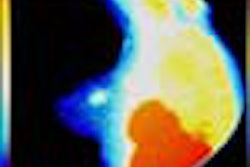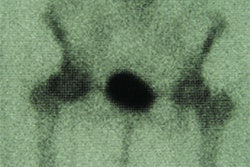In a little more than three decades, vascular and interventional radiology (IR) has developed a wide range of procedures, tools, and techniques. They include angioplasty, stenting, TIPS (transjugular intrahepatic portosystemic shunts), endografts, and drainage procedures in many areas, especially in the bile ducts and kidneys, as well as abscesses. IR procedures are now used for diagnosis and therapy, and in virtually all body organs and cysts.
According to Dr. Frederick Keller, chairman of the department of radiology at the University of Oregon in Eugene, the strength of interventional radiology is reflected in its principal organization, the Society for Cardiovascular and Interventional Radiology (SCVIR).
"The SCVIR has about 3,800 [members], and just finished its meeting this year with 5,500 attendees, which is the second largest radiology meeting in the world after RSNA, and there’s a well-established worldwide community of interventional radiologists," Keller said.
That’s the sunny side. According to Keller, the picture is also clouded by turf battles and the resulting loss of procedures, and stagnation of training. Interventional radiologists are training clones of themselves, he said, not the clinical and patient-centered skills they need to adapt to a changing marketplace.
Moreover, IR suffers from a lack of recognition and identification among nonradiologists and the public, and poor recognition by organized radiology, Keller said.
To wit: In 1988, interventional radiologists performed 85% of all PTA and stenting procedures. By 1996 it had fallen to 75%, and in 2000 the figure is estimated at 60%, Keller said.
A look at accrediting programs provides insight into the numbers, Keller said. In one year, 101 vascular interventional radiology programs trained 228 fellows, he said. Eighty-two vascular surgery programs turned out 102 fellows.
"And look at cardiology: 177 programs, 2,173 fellows," he said. "It’s the 800-lb. gorilla."
Cardiologists have moved aggressively into interventional radiology because there are simply too many of them to take care of heart disease, he said.
"It’s estimated that medical education could stop training cardiologists today and there’d (still) be enough for 20 years, so they’re looking for other areas to move into, and peripheral vascular disease is very appealing to them," Keller said. "Furthermore, cardiologists have changed their name. They’re no longer known as the division of cardiology, but rather as cardiovascular specialists."
A recent survey of Society for Vascular Surgery members showed that 78% believed they should be doing all of the catheter work on their patients, Keller said. Meanwhile, the organization has published its own credentialing criteria for endovascular surgery.
"Needless to say, (the criteria were) quite a bit less stringent than the consensus document that was earlier published between interventional radiology, vascular surgery, and cardiology," Keller said. "Fortunately, the American Medical Association hasn’t agreed to this yet."
As if the cardiovascular losses weren’t enough, the kidneys and lungs are acting up now too.
"There’s now a society called the American Society of Diagnostic and Interventional Nephrology, and their primary purpose is to promote the ‘procedural aspects of nephrology,’" Keller said. A recent article in The New Nephrologist (O’Neill) "says that nephrologists need to take control of their own procedures, meaning that they need to self-refer, and do all the things that they had been referring out -- especially for dialysis work and access work."
And the March 8 New England Journal of Medicine dives into the brand-new specialty of interventional pulmonology. The article covers procedures that interventional radiologists have been doing for years: balloon dilation of tracheal stenoses, bronchial stenoses, and tracheo-bronchial stenting, Keller said (NEJM, March 8, 2001, Vol.344:10, pp.740-749).
These turf incursions are occurring in part because radiologists have virtually no control of their patients, and depend entirely on referrals from other specialties, Keller said.
Interventional radiologists are at a fork in the road, and the choices they make today will determine future trends in the field, he warned. If they choose to ignore the coming turf attacks, more and more of their work will be taken over by specialists whose fields of endeavor relate to specific body or organ systems.
"We need to make radical changes," Keller said. "We need to make changes in interventional radiologists being able to take care of patients and access patients. We need to make changes in our training, we need to be recognized by the medical community and the lay public -- so we need name and identity recognition -- and we need to change our relationship with organized radiology."
To accomplish these goals, Keller recommends that interventional radiologists:
- Improve training to emphasize patient care and clinical care, and teach the skills to colleagues in IR.
- Establish name and identity recognition for interventional radiologists in the medical community and among patients.
- Focus on seeing and managing patients daily, setting up clinic and office facilities, and establishing noninvasive vascular laboratories.
- Give interventional radiologists a new title that emphasizes surgery, e.g., "radiologic surgeons."
- Work with organized radiology to separate IR from diagnostic radiology. Establish IR as a "third house" of radiology, separate from but equal to radiation oncology and diagnostic radiology.
"Diagnostic radiology and IR have different goals," Keller said. "Both in private practice and in academic medicine, our imaging colleagues have been nonsupportive of a clinically based IR practice. They feel that the time interventional radiologists spend on the ward, seeing patients, talking to family, making rounds, is a waste of time, and they should be reading films during that time. I think our imaging colleagues are insensitive to the patterns of IR."
But regardless of their views, the stakes couldn’t be higher for interventional radiologists, Keller said.
"If we lose all these interesting and challenging procedures, we won’t have a lot of people wanting to come into our specialty," he said. "Imagine if we could have saved coronary angioplasty and coronary stenting. I think we’d be in a lot better position."
By Eric BarnesAuntMinnie.com staff writer
March 20, 2001
Related Reading
Interventionalists urged to start using cardiac MRI, March 6, 2001
Radiologists perform more emergency x-ray exams, March 1, 2001
Radiologists and surgeons join forces to treat aortic aneurysms, February 27, 2001
High demand for image-guided procedures strains interventional radiologists, January 29, 2001
Referring physicians in Philadelphia ordering more US-guided procedures, January 8, 2001
Rosy job market ahead for interventional radiologists, November 30, 2000
Click here to post your comments about this story. Please include the headline of the article in your message.
Copyright © 2001 AuntMinnie.com



















